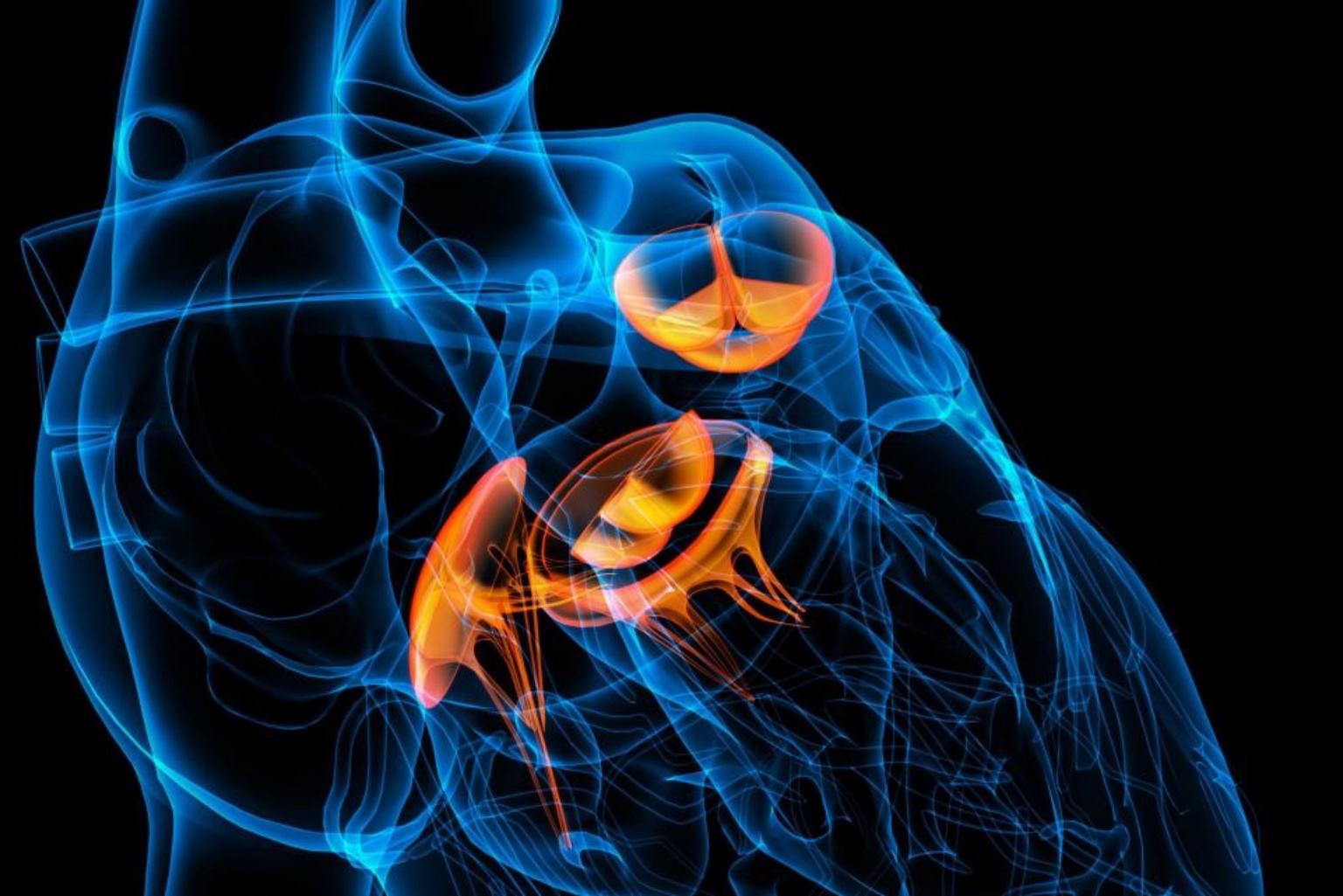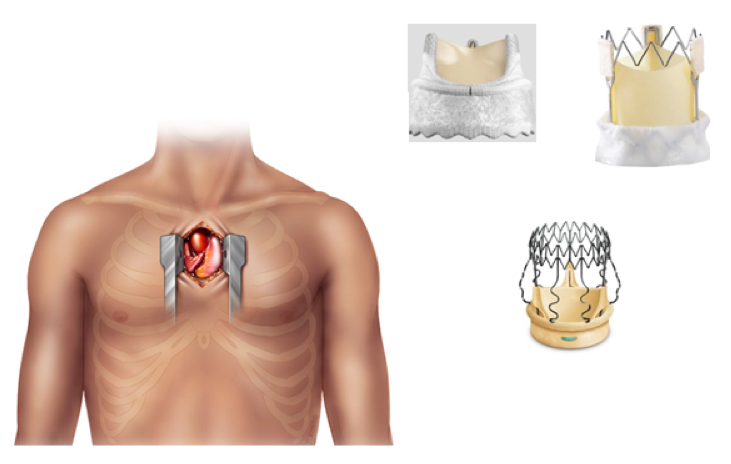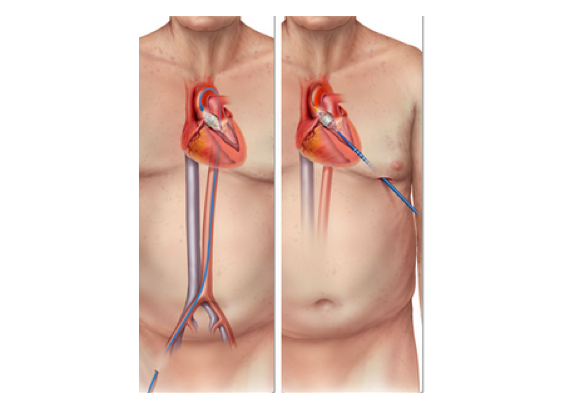CARDIAC VALVE DISEASE

Human heart is a pump consisting of 4 cavities. There are valves between these cavities and the two large vessels coming out of the heart, which regulate the blood flow and making sure that the flow takes place in one direction only. The blood in the human circulation first comes to the right atrium of the heart, then it moves to the right ventricle through the tricuspid valve. From here, it travels to the pulmonary artery and both lungs through the pulmonary valve. Once the blood arrives at the lungs, it returns to the left atrium of the heart this time round as soon as it leaves the carbon dioxide and receives the oxygen here. From here, it moves to the left ventricle through the mitral valve, after which it is pumped to the aorta and entire body through the aortic valve.

Valve disorders can occur as “Congenital” and “Acquired” anomalies. Acquired valve disorders can emerge depending on a disease called “rheumatic fever” seen in childhood or due to aging. Also, an anomaly called mitral valve dysfunction may occur following an heart attack.
In adult patients, stenosis and/or leakage may occur due to calcification on mitral ad aortic valves frequently and on tricuspid valve less frequently or only the leaks may occur due to weakening in the valve tissue.
What are the signs and symptoms of heart valve problems?
The most distinct symptom in people with a valve disease is the shortness of breath. This symptom which becomes noticeable upon effort at the beginning manifests itself when at rest in the following periods. And in the final stage, cardiac insufficiency becomes the prominent problem. Apart from that, rhythm disturbances are widely seen. Moreover, fainting and chest pain are some of the major signs in patients with aortic valve disease.
How it is diagnosed?
It is diagnosed with physical examination followed by further investigations and tests. The most important test here is “echocardiogram”. This test tells us about the valve structures and the overall functions of the heart. And also, a further analysis which we call heart catheterization can be performed depending on the age and the valve involved.
How is it treated?
The conclusive treatment of valve disease is surgical. Surgical treatment consists of two main groups. The first one is the repair method which can be applied on some valves. This method is a highly successful method in some cases involving the “mitral” valve. The second one is the replacement of the valve with a prosthetic valve. Valve repair and replacement operations are the surgeries performed by using a heart-lung machine (Cardiopulmonary bypass) and by stopping the heart. Patients remain in intensive care unit for 1-2 days depending on their general condition. The length of hospital stay varies between 5-7 days. This process takes approximately one month before the patients get back to their daily lives.
How many types of prosthetic valves available?
There are two types of prosthetic valves: Mechanical and Biological. The disadvantage of mechanical valves is that they require the lifetime use of a blood thinner medication called “Warfarin”. If not used properly, Warfarin is an extremely dangerous medicine. On the other hand, biological valves do not require long term use of Warfarin. Therefore, they are rather advantageous over the others. On the other hand, their biggest disadvantage is that they last to 20 years as opposed to the mechanical ones.
How should we take Coumadin?
Strictly, Coumadin must be prescribed by a doctor with the dose adjusted and blood level checked at regular intervals.
What are the recent developments in the field of prosthetic valves?
The early prosthesis valves are the mechanical valves manufactured in 1960s. On the other hand, biological valves were introduced in late 1960s and today next-generation valves, which we call 4th generation, hit the marketplace. In recent years the biggest breakthrough came in the aortic valve prostheses. Now it is possible to replace the valve. The sutureless valves are another new technology that enables the aortic valve to be replaced without any sutures on the heart. Particularly, the sutureless valves yielded excellent the results in recent years and enabled the valve operations to be performed by means of minor incisions without cutting fully open the breastbone (sternum). It also shortened the operation times as well.
How are the valves that you call “sutureless valve” placed?
Sutureless valves are in fact biological valves, which are placed on a caged stent before it replaces the failing aortic valve after it is removed by means of a special apparatus. The caged stent allows the valve to stay in the position we want. No suture is needed to affix the valve onto the heart, which enables the operation to take a short time and requires minor incisions only.
How about the results of surgeries performed with minimally invasive incisions?
First of all, I would like to indicate that the surgery through small incisions is not suitable for every patient. Thus, the patients should be assessed on a case-by-case basis and this method should be consulted only if it is convenient. Otherwise, the patient may sustain a damage due to such procedure. On the other hand, when it is applied on the suitable patients, small incision causes less bleeding and respiratory problem and especially the wound healing is improved in elderly patients.
The traditional surgical technique requires , 15-20 cm opening in the breastbone. Whereas, in mini aortic valve replacement, a small 5-8 cm long cut is made along the upper part of the breastbone only. Alternatively a small long cut is made on the right side of the chest below the collar bone.

What does the surgery through groin look like and is it suitable for every patient?
Valve replacement surgery through groin is for the “aortic” valve only. This method involves the replacement of the aortic valve by means of a valve placed on a catheter, without using a “heart-lung machine/ Cardiopulmonary bypass” and without stopping the heart. This is a technique which has developed in the last 10 years and used especially in elderly patients. The catheter is usually inserted through the groin and moved through the chest and inside the aorta, up to the heart and the new valve is then replaced without having to remove the failing valve.

This method requires the patients to have a good vessel structure. In fact, it is not such a simple procedure as it seems. Thanks to its results, it is recommended for the patients who have the risks of classic surgical operations. This is how it is applied all over the world. And this is because the results of aortic valve replacement operations through the groin are not at a desired level compared to those of classic surgical operations.
The reason for this is that the results of aortic valve replacement operations in the groin are not at the desired point according to classical surgical methods.
The intervention through the groin for mitral valve is actually not a valve replacement operation but rather regarded as sort of a provisional repair.
What are your recommendations for the patients who have a valve operation?
First of all, I would like to indicate that valve operations are the operations that need to be performed before the cardiac function weaken, as in the case of other heart operations. So, if it is too late for fear of having an operation, the operation will not be as effective as it would be and turn into a very risky one. These operations need to be performed especially before any rhythm disturbances develop.
To speak about the mechanical valves; the most important consideration to pay attention is the regular use of the drug “Warfarin”. It must be remembered that mechanical valves can cause a clot formation if the blood level of the drug is not at a desired level, and eventually this clot can lead to deadly results including paralysis in the patient. And when the blood level is maintained above and beyond the desired level, haemorrhage will appear as the most critical complication.
Another major issue in valve patient is infection. When there is foreign object in our body, it can easily settle in this foreign object. Prosthesis valves are in fact a foreign object. Therefore, it is of vital importance for the valve patients to protect themselves from the infections. The patients must always consult their doctors before they have any intervention in their body and take the necessary measures against infections.
